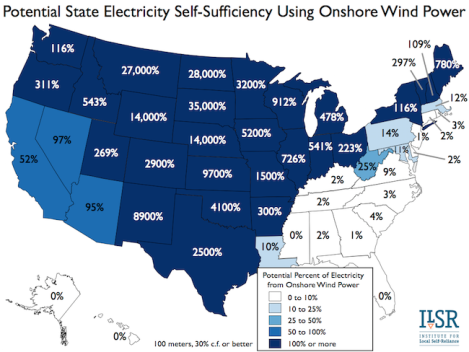A story in the Minneapolis Star Tribune highlights the increasingly common use of 100 meter wind turbines for new wind power projects, up from the previous 80 meter standard. The technological change grabs more wind energy, with consistently higher wind speeds at higher altitudes, meaning states can get even more power from a similar number of turbines.
In our 2010 report Energy Self-Reliant States, we illustrated the potential for state self-reliance on wind power with the following map, using NREL data that assumed turbine heights of 80 meters (and a minimum capacity factor of 35%, to be conservative). The following two maps show the potential state self-reliance on wind power at the previous 80 meter turbine height and at the new 100 meter turbine height (with a minimum capacity factor of 30% or greater). See the original article for a handy mouseover option.
The taller turbines mean that five more states are able to get 100% or more of their electricity from wind power (for a total of 27) and 30 states could get at least half their electricity from in-state wind power alone.




